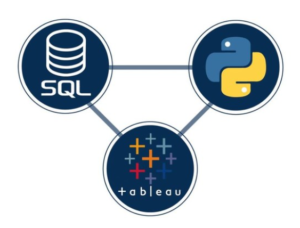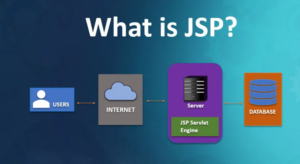In today’s industrial landscape, the integration of PLC and SCADA technologies has become paramount for optimizing operations, enhancing productivity, and ensuring efficiency. The industrial landscape is constantly evolving, driven by automation and efficiency. Two critical technologies at the heart of this revolution are Programmable Logic Controllers (PLCs) and Supervisory Control and Data Acquisition (SCADA) systems. Understanding their roles and how they work together is crucial for anyone involved in industrial automation, process control, or engineering. This comprehensive blog post serves as your guide to demystifying PLC and SCADA. We’ll delve into their core functionalities, explore the key differences, and unveil their collaborative power in driving industrial success. So, buckle up and get ready to dive into the fundamentals of PLC and SCADA technologies!
What is a PLC (Programmable Logic Controller)?
Imagine a rugged, industrial computer specifically designed to thrive in harsh environments. That’s essentially a PLC! It’s a solid-state, microprocessor-based control system programmed to automate complex industrial processes in real-time. Think of it as the brain of a machine, making critical decisions based on sensor inputs and executing predefined control logic.
Key functions of a PLC:
Reads sensor inputs: Temperature, pressure, flow, etc.
Executes control logic: Based on pre-programmed instructions.
Controls outputs: Motors, valves, actuators, etc.
Communicates with other devices: PLCs, SCADA, HMI.
Advantages of PLCs:
Reliable and robust: Built for harsh conditions.
Flexible and programmable: Adaptable to diverse applications.
Real-time control: Delivers quick response to process changes.
Cost-effective: Efficient solution for many automation needs.
What is SCADA (Supervisory Control and Data Acquisition)?
Picture a central command center monitoring and controlling a vast industrial network. That’s the essence of SCADA! It’s a software-based system that provides supervisory control and data acquisition for complex industrial processes. Think of it as the eyes and ears of the operation, overseeing the entire system and making informed decisions based on real-time data.
Key functions of SCADA:
Monitors data: Gathers data from PLCs, sensors, and other devices.
Visualizes data: Provides operator interfaces for monitoring and control.
Supervises operations: Issues commands to PLCs and other systems.
Acquires and stores data: Logs historical data for analysis.
Communicates with other systems: SCADA, HMI, enterprise software.
Advantages of SCADA:
Centralized control: Manages large-scale operations efficiently.
Data visualization: Provides clear insights into process performance.
Alarm and event management: Identifies and responds to critical events.
Data logging and analysis: Enables trend analysis and optimization.
PLC vs. SCADA: Understanding the Key Differences
While both PLC and SCADA play crucial roles in automation, they serve distinct purposes:
Focus:
PLC: Real-time control of individual machines or processes.
SCADA: Supervisory control and data acquisition for larger systems.
Form:
PLC: Hardware-based, rugged industrial computer.
SCADA: Software-based, typically runs on a computer server.
Functionality:
PLC: Executes pre-programmed logic based on sensor inputs.
SCADA: Monitors data, visualizes information, and issues commands.
Communication:
PLC: Communicates directly with sensors and actuators.
SCADA: Communicates with PLCs, other devices, and HMI.
Complexity:
PLC: Relatively simple, focused on specific tasks.
SCADA: More complex, manages large-scale systems and data.
Remember: PLCs and SCADA are not competitors; they complement each other for a comprehensive automation solution.
The Power of PLC and SCADA Working Together
Imagine a symphony of automation where PLCs play their individual instruments, controlled by the conductor – the SCADA system. This collaboration unlocks numerous benefits:
Increased efficiency: Automated processes run smoothly and consistently.
Improved safety: Real-time monitoring and control minimize risks.
Reduced costs: Optimized operations save energy and resources.
Enhanced productivity: Data-driven insights enable better decision-making.
Scalability: The system can grow and adapt to changing needs.
Applications of PLC and SCADA:
Manufacturing: Assembly lines, robots, material handling.
Power generation: Control of power plants, distribution grids.
Oil and gas: Pipeline monitoring, well control, processing.
Delving Deeper Into PLC and SCADA: Advanced Concepts and Considerations
While we’ve covered the fundamental functionalities, let’s explore some additional aspects of PLC and SCADA:
Programming PLCs: Ladder logic, function block diagrams, structured text are common languages. Choosing the right language depends on application complexity and user expertise.
SCADA System Architecture: Client-server architecture is common, with distributed data acquisition units (RTUs) collecting data from PLCs and sensors. Security considerations are crucial for protecting critical infrastructure.
Communication Protocols: Modbus, Ethernet/IP, Profinet are widely used protocols for Data Exchange between PLCs, SCADA, and other devices. Choosing the right protocol depends on factors like speed, reliability, and security.
Human-Machine Interface (HMI): The operator interface for SCADA, providing visualization, control, and data analysis capabilities. Usability and ergonomics are essential for efficient operation.
SCADA Security: Protecting against cyberattacks is paramount. Implementing firewalls, access control, and security protocols is crucial for safeguarding critical infrastructure.
Trends and Future Developments: The rise of Industrial Internet of Things (IIoT) and cloud-based SCADA solutions is transforming the landscape. These advancements offer greater connectivity, data analytics, and remote access, enabling more efficient and flexible automation systems.
Conclusion
By understanding the distinct roles and collaborative power of PLC SCADA, you’re equipped to navigate the exciting world of industrial automation. These technologies are the backbone of modern manufacturing, infrastructure, and resource management, driving efficiency, safety, and sustainability. As the industrial landscape evolves, embracing these technologies and staying informed about advancements will be key to success. Join us at Seldom India and embark on a journey towards a successful career in PLC-SCADA technology.




